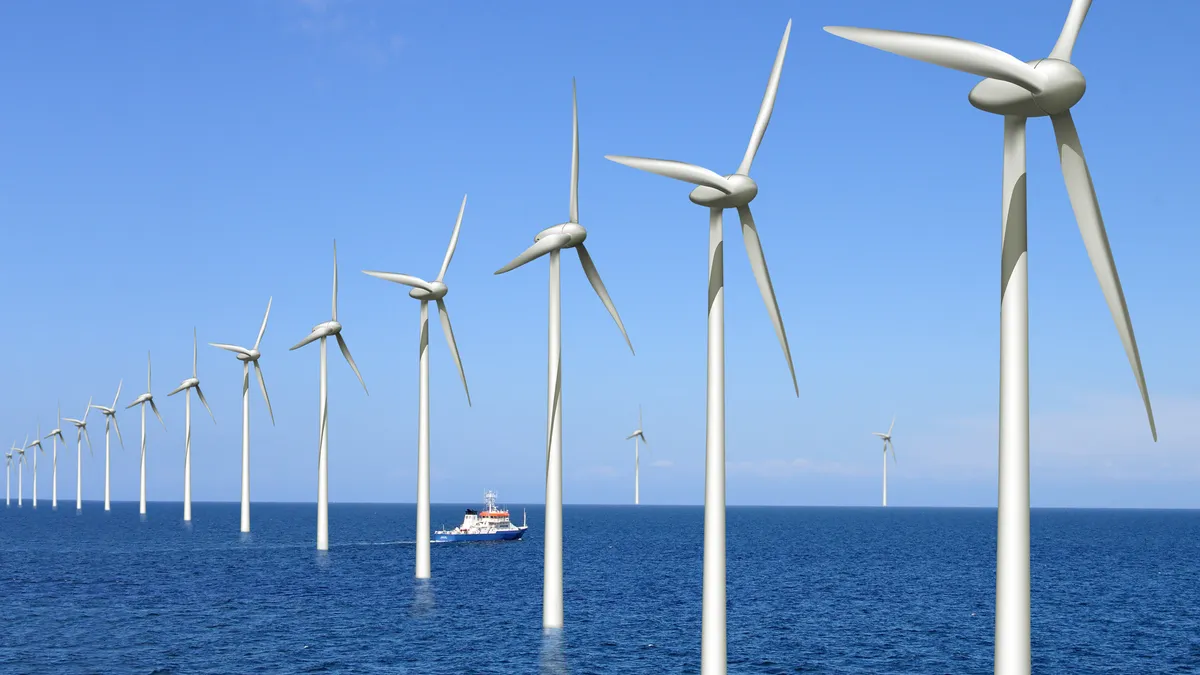Dive Brief:
- The New York State Energy Research and Development Authority issued a "master plan" for developing the state's offshore wind energy industry on Monday that lays out a "comprehensive roadmap" to establish 2,400 MW of offshore wind energy by 2030. The plan will lead to the procurement of at least 800 MW over the next two years, with solicitations in 2018 and 2019.
- The plan identifies areas for potential development, mitigation measures and workforce needs, as well as tackling how the state will procure the resources. NYSERDA has filed a white paper with the Public Service Commission laying out seven procurement options.
- In October, New York asked the federal Bureau of Ocean Energy Management to identify four new areas for development and provided areas for consideration. Each of the new Wind Energy Areas would be capable of accommodating at least 800 MW of offshore wind generation.
Dive Insight:
NYSERDA's plan doubles as a comprehensive guide to offshore wind in New York. The agency says it is "a comprehensive roadmap" that takes into account environmental, maritime, economic, and social issues, along with costs and barriers. Its appendices is made up of two dozen studies from a sand and gravel resource analysis to assessments of ports, cables and pipelines.
NYSERDA's analysis of procurement options includes considers seven schemes, including utility-owned generation. Offshore wind developers would develop, design, build and potentially operate offshore wind facilities. Once completed, project ownership would be transferred to a utility or utilities.
Utility-owned generation "represents an alternative form of hedged procurement that would benefit from the low costs of capital that would be available through rate-basing utility investments," the paper noted.
A bundled power purchase agreement method would provide a hedge against commodity electricity price risk, NYSERA said, "and thus could unlock significant reductions in project cost of finance." Using the bundled PPA scheme, a utility would competitively procure offshore wind projects and give winning projects a fully-hedged revenue stream for commodity value and renewable energy certificates. The plan also includes $15 million to train the local workforces for the offshore wind industry.
The United States has gotten a slow start on developing offshore wind, but that is about to change as more states look to invest in the resource. Along with New York, both Massachusetts and New Jersey have made commitments that could give the United States 7.5 GW of offshore wind within a few years. Analysts at Bloomberg New Energy Finance say offshore wind resources globally will grow by 600% by 2030.















